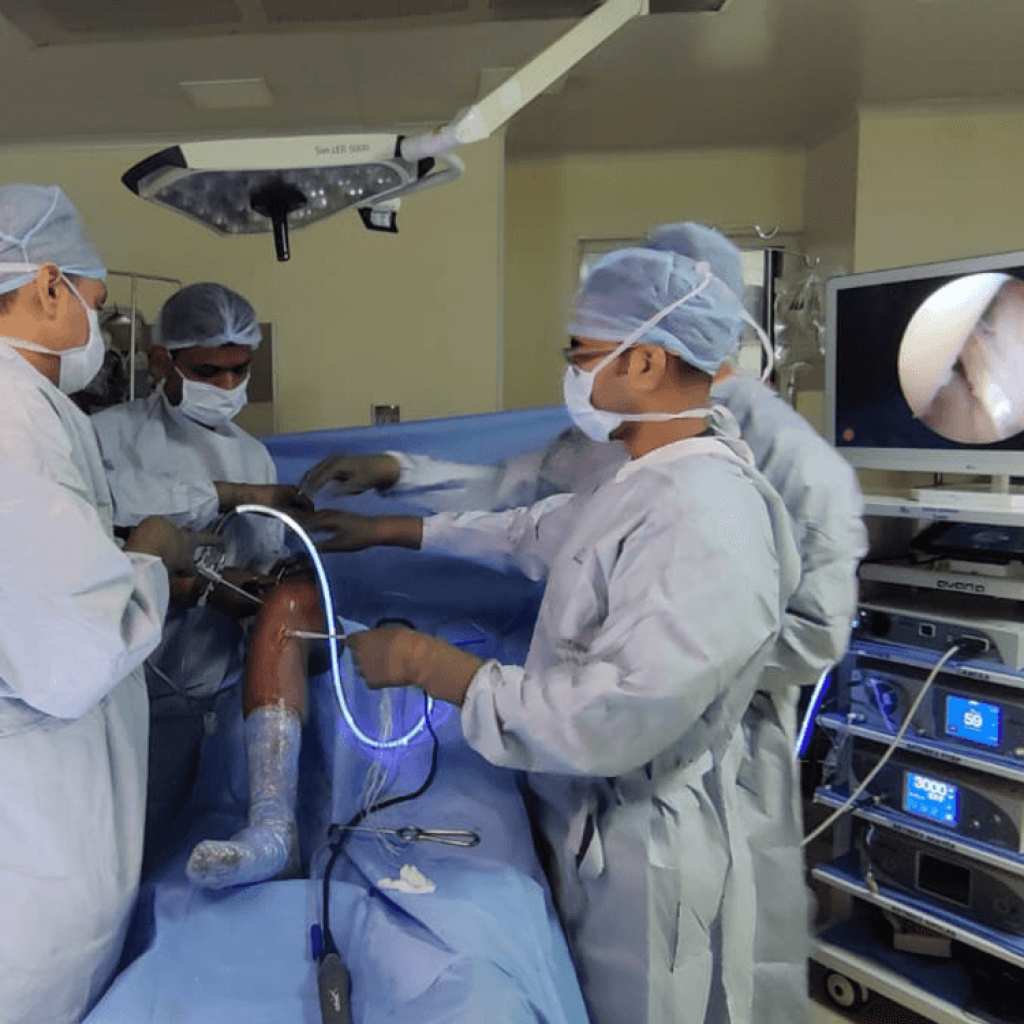ACL with ALL Reconstruction: A Comprehensive Guide
Case of 18 year old football player, sustained an injury to knee joint 3 months back. Clinical examination and MRI knee showed evidence of ACL tear with meniscal injury. In view of age less than 18 years, contact sports player(football) who have higher incidence of ACL re-rupture after isolated ACL reconstruction we planned an ACL and ALL reconstruction which gives added rotational stability in such persons and helps in achieving higher return to sports rates. Will be attaching images of the advanced procedure
Introduction:
In recent years, a surgical technique known as Anterior Cruciate Ligament (ACL) reconstruction with Anterolateral Ligament (ALL) reconstruction has gained prominence in the field of orthopedics. This advanced procedure is designed to address complex knee injuries, providing enhanced stability and a higher likelihood of successful rehabilitation. In this article, we’ll explore the concept of ACL and ALL reconstruction, its significance, and how it impacts the lives of patients.

- The Crucial Role of the ACL and ALL:
The ACL and ALL are vital ligaments that help stabilize the knee joint. While the ACL has long been recognized for its role in knee stability, the ALL, a structure on the outside of the knee, has gained more attention in recent years for its contribution to rotational stability. - Indications for ACL with ALL Reconstruction:
This combined procedure is typically recommended for individuals with complex knee injuries, recurrent instability after ACL reconstruction, or those with a high demand for knee function, such as athletes. It aims to provide additional rotational stability and prevent residual rotational instability that might persist even after standard ACL reconstruction. - Surgical Procedure:
The surgery involves replacing the torn ACL and reinforcing the anterolateral aspect of the knee with tissue grafts. This may include hamstring tendons or allograft tissue. The goal is to create a more stable knee joint, reducing the risk of re-injury. - Rehabilitation and Recovery:
After ACL with ALL reconstruction, patients must follow a comprehensive rehabilitation program. Physical therapists work closely with individuals to regain strength, range of motion, and stability. This is a critical phase that can determine the success of the surgery. - Return to Activity:
As with traditional ACL reconstruction, the goal is to allow patients to return to their desired level of activity. Athletes, in particular, need to undergo specialized training and gradual reintroduction to their sport, ensuring their knee can handle the physical demands. - Long-Term Benefits:
ACL with ALL reconstruction has shown promising results in reducing the risk of recurrent instability and providing improved knee function. It offers patients a better chance of resuming an active lifestyle without the fear of re-injury.
Conclusion:
ACL with ALL reconstruction is an advanced surgical technique that holds significant promise for individuals with complex knee injuries. By addressing both the ACL and the ALL, it aims to enhance stability and rotational control of the knee, which is crucial for returning to sports and daily activities. Patients considering this procedure should consult with orthopedic specialists to determine if it’s the right option for their specific condition and goals. The road to recovery may be challenging, but with the right care and commitment, it can lead to a more stable and active future.



